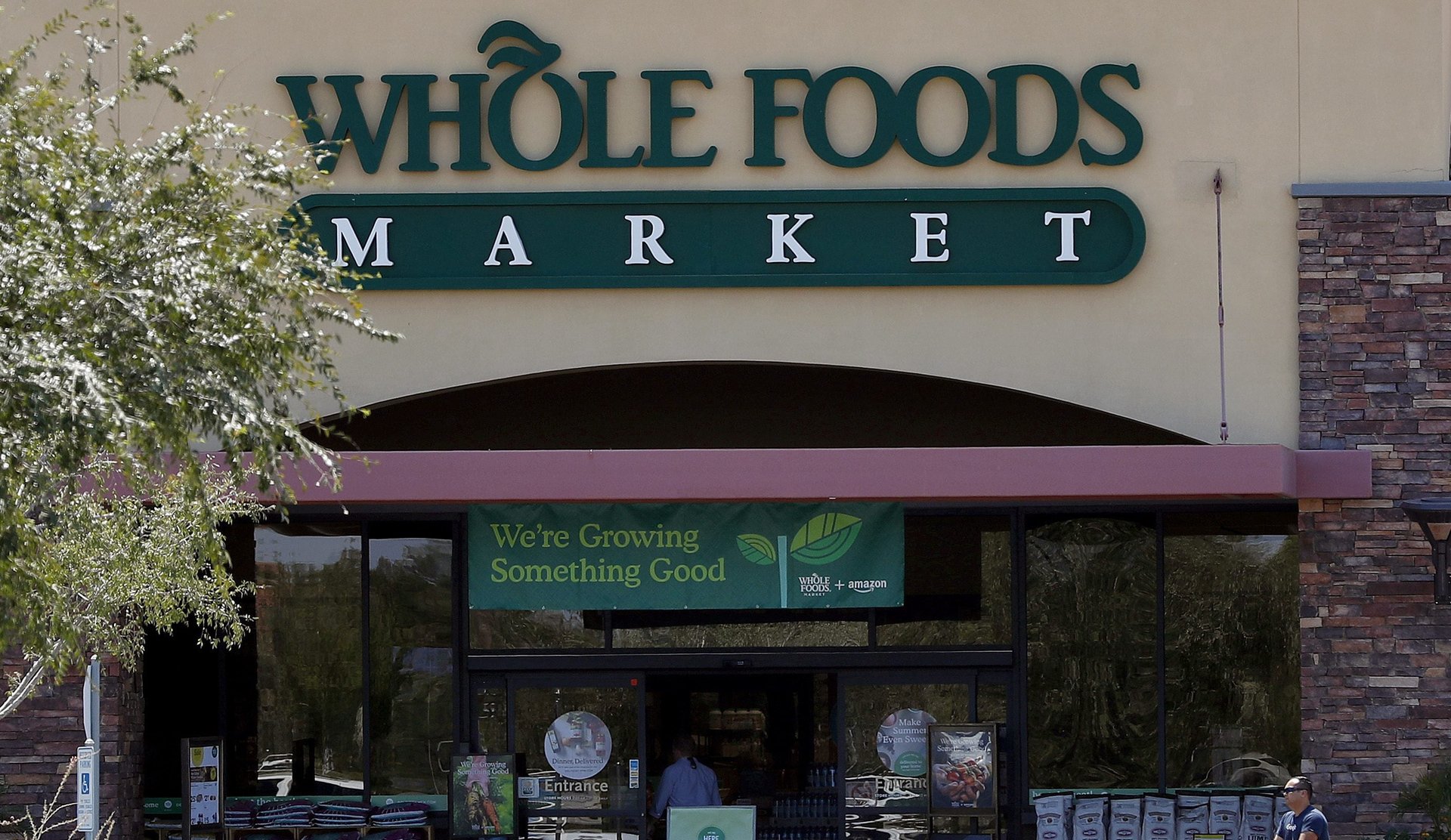Amazon just explained how Whole Foods fits into its plan for world domination
There was a rather remarkable moment on Amazon’s third-quarter earnings call yesterday (Oct. 26) where Brian Olsavsky, the company’s chief financial officer, laid out everything Amazon thinks it can do with its $13.7 billion acquisition of Whole Foods Market.


There was a rather remarkable moment on Amazon’s third-quarter earnings call yesterday (Oct. 26) where Brian Olsavsky, the company’s chief financial officer, laid out everything Amazon thinks it can do with its $13.7 billion acquisition of Whole Foods Market.
Olsavsky’s answer came in response to a question from Douglas Anmuth, an analyst at J.P. Morgan Securities, on whether Amazon had considered using Whole Foods’ more than 400 brick-and-mortar stores to establish a physical pharmacy presence, which it has reportedly received wholesale licensing for in at least 12 states. At first it seemed like Olsavsky would only decline to comment on Amazon’s rumored pharmacy ambitions. But then he continued:
I will say we do see a lot of opportunity with Whole Foods. As I said, there’ll be a lot of work together between Prime Now, AmazonFresh, Whole Foods, Whole Foods products on the Amazon site, Amazon Lockers at the Whole Foods stores. So, there’ll be a lot of integration, a lot of touch points and a lot of working together as we go forward. And we think we’ll be also developing new store formats and everything else just as we talked about in the past before Whole Foods: Amazon Books stores, Amazon Go, and the opportunity that that technology presents. We have on-campus bookstores.
So, we are experimenting with a lot of formats. I think that Whole Foods really gives us a, you know, vast head start on that and a great base. And a great team to work with who has a lot of history and a lot of—they probably have 10 to 20 years of learning that we don’t have and wouldn’t have. So, we’re really excited about that and I think working together, will bring our different strengths to the table and really be able to build on behalf of customers.
It was obvious from the day Amazon completed its acquisition of Whole Foods in August that the company had big plans. Amazon slashed prices on organic avocados and rotisserie chicken and placed displays of “farm fresh” Amazon Echos, its personal voice-controlled assistant, at the front of stores. Around some Whole Foods locations, it began installing Amazon Lockers, large orange lockers where Amazon customers can pick up online orders and drop off returns.
What Olsavsky described goes beyond cheap avocados or using Whole Foods for shipping and distribution. The company envisions nothing less than using the Whole Foods infrastructure to build itself into the real, physical lives of everyday Americans.
Amazon of course is already ubiquitous—an estimated two-third of US households subscribe to its Prime membership program. But aside from the packages that come to your door and a few forays into hardware (Kindle, Amazon Echo, Amazon Dash buttons, the failed Fire Phone), the company has little in the way of a physical presence.
Why does that matter? Even in our digital heyday of on-demand-anything, the brick-and-mortar store remains a valuable asset. Just look at Apple, which has 498 retail stores worldwide, 271 of them in the US. Apple uses those stores to sell its high-end hardware—the new iPhone X starts at $999—as well as to hold marketing events and “promote brand awareness,” per its 2016 annual report. You can order an iPhone online, sure, but you can see, touch, and admire it in a physical store. Apple stores are a temple to Apple products, visited by more than 1 million people per day. Apple is the world’s most valuable company, with a market capitalization that exceeds $800 billion.
Amazon wants that too. “We think the bookstores, for instance, are a really great way for customers to engage with our devices and see them, touch them, play with them and become fans,” Olsavsky told analysts on an earnings call in January, after Amazon announced its full 2016 results. “So we see a lot of value in that as well.” Of course, it takes time and money to build a network of stores akin to Apple’s, which is why Amazon did the next best thing: It bought Whole Foods and its roughly 430 upscale stores in a deal that, after the market weighed in approvingly, practically paid for itself.
What became clear in yesterday’s earnings call is that Amazon sees Whole Foods as its nexus of brick-and-mortar power. Whole Foods will be where online meets offline for Amazon and its consumers, merging a variety of Amazon fulfillment and delivery operations (Prime Now, AmazonFresh, Amazon Lockers) with in-store customer experiences. Whole Foods will be a testing ground for Amazon’s other experiments in physical retail, be they Amazon Books stores, the mostly automated Amazon Go convenience stores, or something else entirely.
In the most recent quarter, Amazon added a new line to its reporting, breaking out revenue from “physical stores” ($1.3 billion) for the first time. It will be a line to watch closely in the future.